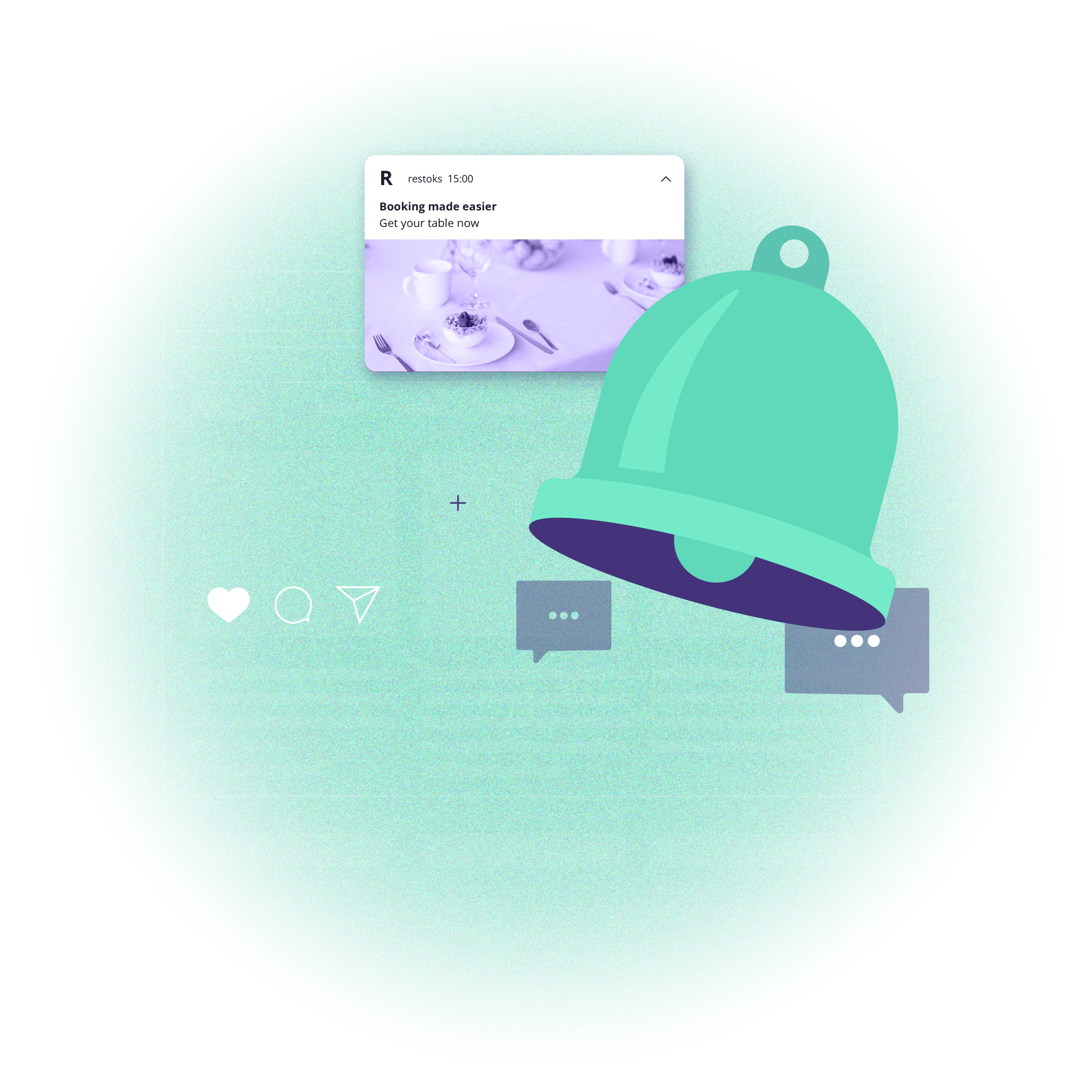More user-friendly notifications - Firefox changes the sign-up process for web push
 Katarzyna Kwartnik
Katarzyna Kwartnik
The Firefox team has recently announced on their blog that they plan to introduce some improvements in the process for signing up for web push notifications. The idea is to limit sign-up form displays to those who don’t want to receive notifications. The changes will become effective in January of 2020 and affect only default forms.
It should be noted here that these changes are beneficial to both the websites sending notifications and the users receiving them. Here’s why.
Current situation (November 2019)
The current subscription process for notifications in the Firefox browser usually looks like this:
1. The user visits the website.
2. A default notification subscription form appears.
3. It disappears only after clicking "yes" / "no" or closing the site.
4. If the user agrees, he automatically joins the group of web push subscribers.
5. If not, the form will be displayed again the next time he visits the site. Currently, there is also a barely visible option to expand the form and click the "never" button. After doing this, the window will not appear again.

There is also a double opt-in option (two-stage registration), the purpose of which is to confirm the subscription. After clicking the "yes" or "allow" button in the first window (set by the owner of the page), one more form is displayed asking if the user wants to receive notifications, this time from the browser.
First step:
Second step:
What’s changing?
The single opt-in model will not be as effective. What will count is increasing subscriber awareness about web push notifications.
Unfortunately, although web push notifications cannot be sent without the explicit consent of the user, some still associate it with pushiness and spam. Firefox does not want uninterested people to have to waste time clicking on the "no" button virtually every time they visit a page.
To make web push even more reliable communication channel and improve the user experience, browsers are introducing the following functions:
Firefox 70:
In the default sign-up form, the browser will change the "not now" option to "never". This means that users who are not interested in notifications will not have to click on "no" during each visit to a given portal.
Firefox 72:
In this version of the browser, you can sign up for notifications by clicking the icon in the URL bar:

source: blog.mozilla.org
After the user completes this action, the correct form will be displayed.
Google Chrome:
For the world’s most popular browser, there is no official information yet, but we know that Chrome is also experimenting with the notification sign-up model. It is highly probable that similar changes will be introduced soon.
---
It is worth stressing again that the changes will not include original forms created in the application, just the default ones that the given browser is responsible.
Here's the difference:
Default form:
Form created in the PushPushGo application:
Will the changes affect the current database?
No, the changes described are effective from now going forward. The subscriber database that you have collected so far will remain intact.
PushPushGo is ready to adapt and move forward
As soon as we learned about the changes, we started running tests and getting ready to optimize performance.
The test results clearly show that the changing way of signing up does not cause a decrease in the number of new users subscribing to notifications. The new subscription method is clearly understood by users.
The new measures aim to strike a balance between accommodating web push notifications and improving the experience for those users who are not and will never be interested. This is hardly an attack on web push notifications — they remain standard for all popular browsers (Google Chrome, Firefox, Opera, Edge, Safari).
New application functionalities
From December 1, 2019, a new sign-up form builder will be available in the PushPushGo application for creating personalized subscription forms.
The new version will offer new options to visually change the form. It will be possible to modify it in any way, which will help to adapt to the new changes being introduced.
The visually attractive, editable form will also tell potential subscribers about the benefits of push notifications, helping to encourage them to sign up and increase the number of subscriptions.
Also, the website owner can decide when and where the form will be displayed.
Of course, we plan to expand PushPushGo with additional functions depending on the needs of customers and changes introduced by browsers.
Summary
These changes are a step towards increasing the effectiveness of web push notifications.
At PushPushGo, we perceive the new enrollment process as an opportunity to build more engaged subscriber bases, consisting of people who are really interested in receiving information and not people who accidentally clicked the "allow" button.
Importantly, Google has always recommended the use of two-step registration for notifications. Everything indicates that notifications will eventually be used for their intended purpose - both by subscribers and senders. And we will soon be able to forget about them as spam.
Not using web push yet?

Test it now - for free!

Content Marketing Manager @ PushPushGo
Words enthusiast both in literature and marketing. At PushPushGo responsible for developing content strategy and writing everything that needs to be written.
Try PushPushGo to engage and connect with your audience.
Create an account and start testing!





